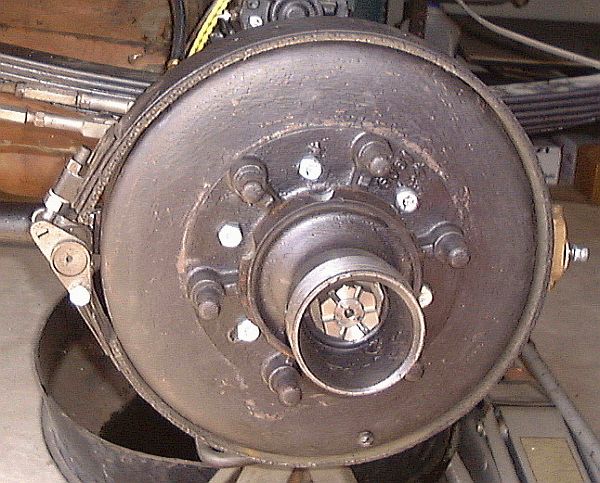|
Due to the manner in which the brake conversion was accomplished the rear wheels appear to be original with the exception of the black flexible brake hose to the backside of the brake drum (seen to the left of the yellow wires at the top of the photograph). The original mechanical brake linkages are swapped so that the handbrake now actuates the external band brake making it the parking brake. This photograph also details how the wire wheel mounts to the wheel hub. Six studs on the wheel hub mate with holes on the wire wheel center hub. To the inside of the studs is a short conical section that the wire wheel center hub mates with. With the wire wheel mounted a large nut threads onto the wheel hub to hold the wire wheel to the wheel hub. The hydraulic brake conversion greatly improved the carís ability to stop but on long downgrades the tendency to experience some brake fade still exists. Perhaps the biggest concern now is that locking up the rear wheels will quickly flat-spot the tires. More importantly locked rear wheels have the potential to spin the tire on the rim. Tubeless tires had not been invented (they would not work on wire wheels in any case) so all wheels have tubes inside the tire maintaining the air pressure. Any sliding of the tire causes the tube to rotate as well. With the tube's valve stem sticking through the outer rim of the wire wheel, the tube can't move too much without putting strain on the valve stem. Too much strain and the valve stem tears from the tube and a blow-out results. |
